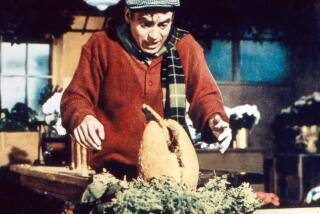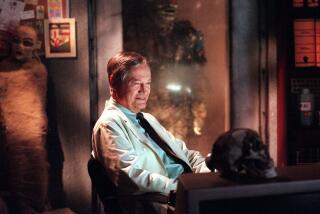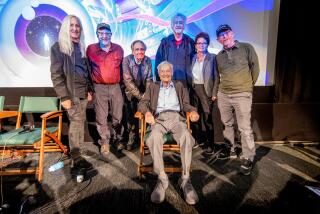James Coburn: Versatile, with a beguiling charm
Years ago, at a small theater on La Cienega, I went to see a performance of a play by Edna St. Vincent Millay called “Conversation at Midnight.” At its center -- I remember no one else on stage -- was a dynamic and fiery young actor named James Coburn.
He was playing, in fact, a fiery and eloquent rebellious young man, and making the words by Millay ring with truth. So far as I can remember, I had never seen Coburn before, but his performance was unforgettable. He seemed larger than the small theater where he was performing.
Whether you knew his work before, what you recognized in his performance was that here was an actor to watch -- and so he was.
Coburn, who died Monday at age 74, proved to be a remarkably versatile performer with a sure command of very literary material like the Millay work, but capable of doing heroes and villains and, perhaps above all, comedy that arose from character rather than funny lines.
He had a kind of mocking insouciance that seemed to go well in a 10-gallon Stetson or no hat at all. He had an easy, wide-mouthed grin, lots of teeth showing, a kind of trademark in many of his roles. He could be suave and almost supercilious now and again.
Like many a fine actor who does not quite make it all the way to superstardom, Coburn became one of the most versatile and best-liked actors around, one of those actors of character who enriched every film he was in and gave depth even to those parts that seem constructed of cardboard. As James Stewart once said, “Those cardboard parts are the hardest of all to play.”
Coburn brought something special to those roles and gave them a third dimension, however two-dimensional they seemed.
He was such good company on the screen that he figured most often, or perhaps most successfully, in sophisticated comedies. But like all good actors, he had a range like a Steinway Grand. He appeared in a couple of early classic westerns, “Ride Lonesome” and “Face of a Fugitive.” He was part of “Magnificent Seven,” which is still one of the classics of the action genre. At that, Coburn’s beguiling charm will probably be most closely associated with the two “Flint” films -- “Our Man Flint” (1966) and “In Like Flint” (1967) -- which still stand as models of sophisticated crime adventures.
Not least, Coburn will be remembered for his valiant triumph in a battle with arthritis that threatened to shorten his career, but thankfully never did.
More to Read
The biggest entertainment stories
Get our big stories about Hollywood, film, television, music, arts, culture and more right in your inbox as soon as they publish.
You may occasionally receive promotional content from the Los Angeles Times.










